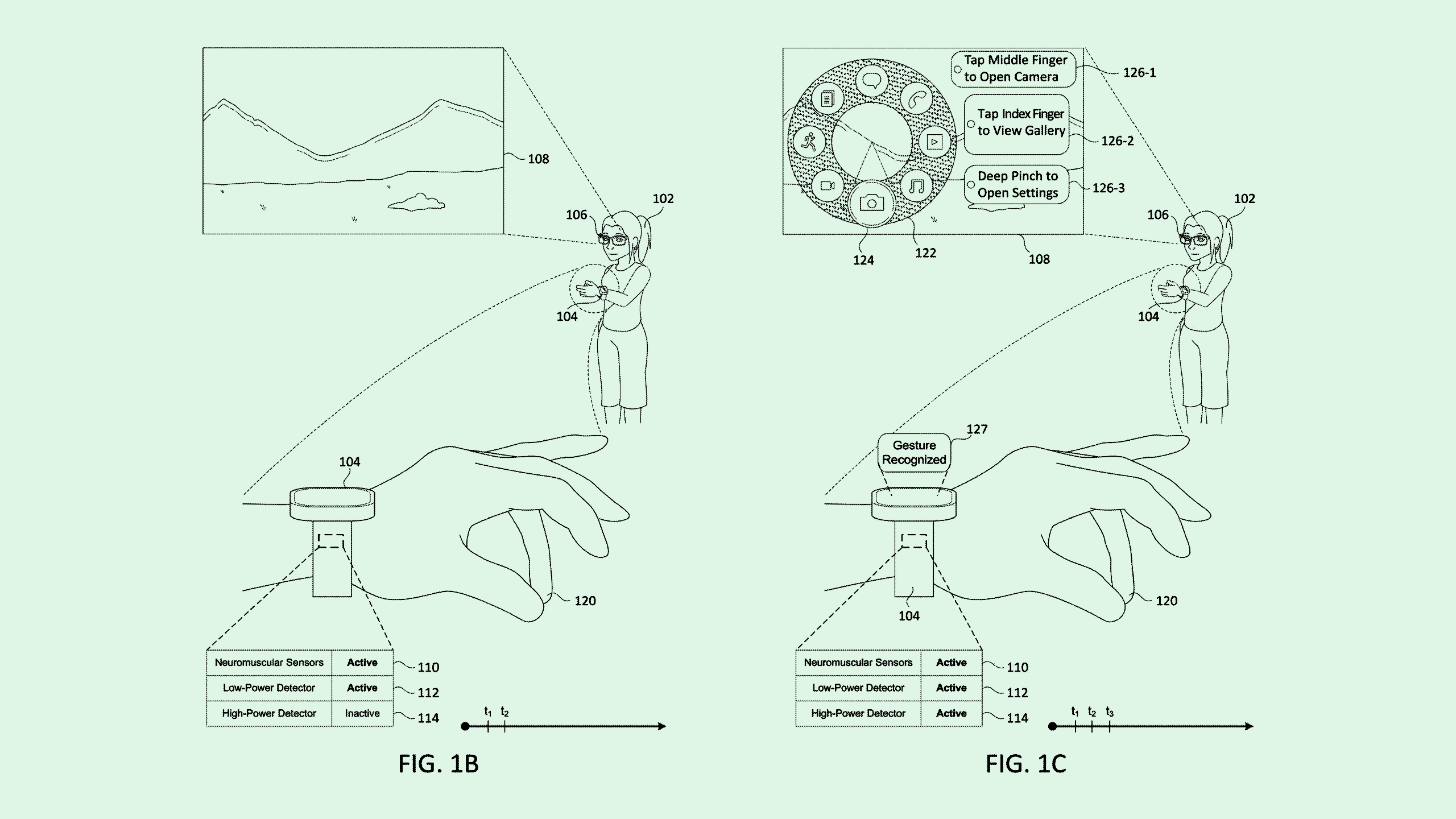Meta Wants it’s AR Devices to Suck Up Less Power
The filing highlights that battery efficiency and form factor remain a major roadblock in artificial reality adoption

Sign up to uncover the latest in emerging technology.
Meta wants to be able to read your body language. Unfortunately, doing so takes more than a little bit of processing power.
Its recent patent may help solve this issue: the company filed an application for “power-efficient processing of neuromuscular signals” to track gestures. This tech uses a “lower-power detector” to distinguish gestures from one another, aiming to reduce misread signals without draining the battery.
“Power-efficiency needs can be particularly pronounced for new in-air hand gestures that can be detected based on neuromuscular signals, because … the machine-learning models used to process the neuromuscular signals can have high-power consumption requirements to operate,” Meta said in the filing.
Meta’s system first collects neuromuscular signals detected via a smartwatch, initially running those signals through the low-power detector. This uses machine learning to determine if a specific in-air hand gesture was performed with “precursor neuromuscular signals.”
If the low-power detector picks up a hand gesture, the high-power detector then kicks in. This sits in a “sleeping or waiting state” until needed to indicate exactly what gesture was performed. Once confirmed, the system would register the gesture, potentially activating a corresponding action.
If that gesture is performed again, only the low-power detector kicks in, saving the battery in the long run by not using the power-intense processor each time a user makes a certain gesture. Using a two-detector system to read the gestures initially also helps mitigate false positives.
Meta noted that this tech could work in tandem with artificial reality systems, allowing for accurate gesture recognition to control virtual, augmented, or mixed reality.
Plenty of tech firms have sought to patent body signal and gesture detection tech – Meta included. While it’s helpful for allowing users to control the world around them in artificial reality contexts, these systems are often embedded within the headsets themselves, giving off a lot of heat and driving up latency, said DJ Smith, co-founder and chief creative officer at The Glimpse Group. “It’s all just additional load that is put into the device,” he said.
Though tracking users’ hands with a headset itself – rather than with a “peripheral” device such as a smartwatch — is preferred for adoption in the long run, current technology is as convenient or accurate as it needs to be, he noted. Using a smartwatch could help alleviate that friction.
At its core, however, this patent addresses the power drain issue – one that’s long been an obstacle in artificial reality development. Meta’s roadmap relies on creating artificial reality headsets, specifically smart glasses that can be continuously worn all day, and used for hours at a time without needing to be charged. Another recent Meta patent highlighted this desire, signaling its research into smart glasses lasting 8 to 12 hours between charges.
But as it stands, these headsets can’t last more than a few hours without rapidly losing battery. Their large form factor, often weighed down by processing needs, also makes them less portable, said Smith. Adding a smartwatch into the mix may drive up the price, but it could significantly reduce necessary processing power on the headsets themselves – opening the door for lighter, more energy-efficient smart glasses.
“The next generation of this tech is trying to figure out how to … get these devices as small as possible,” said Smith.
While Meta chucked plans for its first smartwatch back at the end of 2022, plans for this tech bubbled up again in their roadmap revealed in early 2023. Plus, the company has sought to patent a smartwatch for tracking “physiological measurements” like motion, heart rate, and blood pressure. But Meta has some stiff competition in the watch market, chiefly from Apple, Smith noted.
“When I read this, I thought this was really directed at Apple and the direction that they would likely take with their own headset, watch, and ecosystem,” he said.











